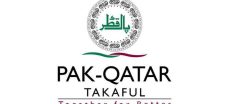[vc_row][vc_column][vc_column_text dp_text_size=”size-4″]In Pakistan, despite the country’s pressing need for qualified medical practitioners, a significant number of female doctors find themselves unemployed. This irony unfolds in a nation where the government allocates substantial funds to subsidize medical education in public sector universities.
A joint research effort by Gallup Pakistan and PRIDE, based on the Labour Force Survey 2020-21, has revealed that a staggering 35 percent of female medical doctors in Pakistan are without employment. This situation is further exacerbated by the country’s acute shortage of qualified doctors. More than 36,000 female doctors either remain jobless or opt to stay out of the labor force for various reasons.
Presently, Pakistan hosts 104,974 female medical graduates, with 65 percent of them employed in various private and state-owned medical facilities. Alarmingly, 14.9 percent are without jobs, while 20.1 percent are completely disengaged from the labor force.
Also Read: 1.2 Million Pakistanis Emigrate Amid Current Govt’s Tenure
Pakistan has produced approximately 200,000 doctors since its inception in 1947, with half of them being females. Disturbingly, data from the Bureau of Emigration indicates that around 30,000 doctors have emigrated from Pakistan since 1970, with an average of almost 1,000 leaving the country annually.
The issue at hand is that a considerable number of qualified female doctors in Pakistan are not actively contributing to the healthcare sector. This is particularly concerning given that many of them studied at public sector universities, where the government heavily subsidizes their education. An average private university charges medical students more than Rs. 5 million, whereas government institutions provide the same education for less than Rs. 1 million. This results in taxpayers’ money, at least Rs. 4 million per doctor, going to waste as one in three female doctors remains unemployed.
The cumulative investment in the education of these non-working female doctors amounts to approximately 200 billion in current value, a significant economic loss. This situation not only incurs costs to taxpayers but also impacts the nation’s healthcare outcomes due to their absence.
Additionally, it is observed that a significant portion of female medical graduates chooses to remain out of the labor force after completing their education, with many of them being married. This trend suggests that some families encourage their daughters to pursue medical education primarily to secure suitable marriage prospects.
The regional breakdown of these doctors’ employment patterns reveals that urban areas offer significantly more employment opportunities for female medical graduates compared to rural regions. Conversely, rural areas have higher unemployment rates and a greater proportion of doctors choosing to stay out of the labor force.
This analysis underscores the need for targeted policy efforts to enhance employment prospects for medical graduates, particularly in rural areas where unemployment rates are elevated. The survey findings not only shed light on the employment challenges faced by female medical graduates but also highlight the broader societal dynamics influencing their career choices.
In summary, while Pakistan grapples with a shortage of qualified doctors, a substantial number of female medical graduates remain unemployed or opt out of the workforce, leading to both economic losses and implications for the nation’s healthcare landscape.[/vc_column_text][/vc_column][/vc_row]











